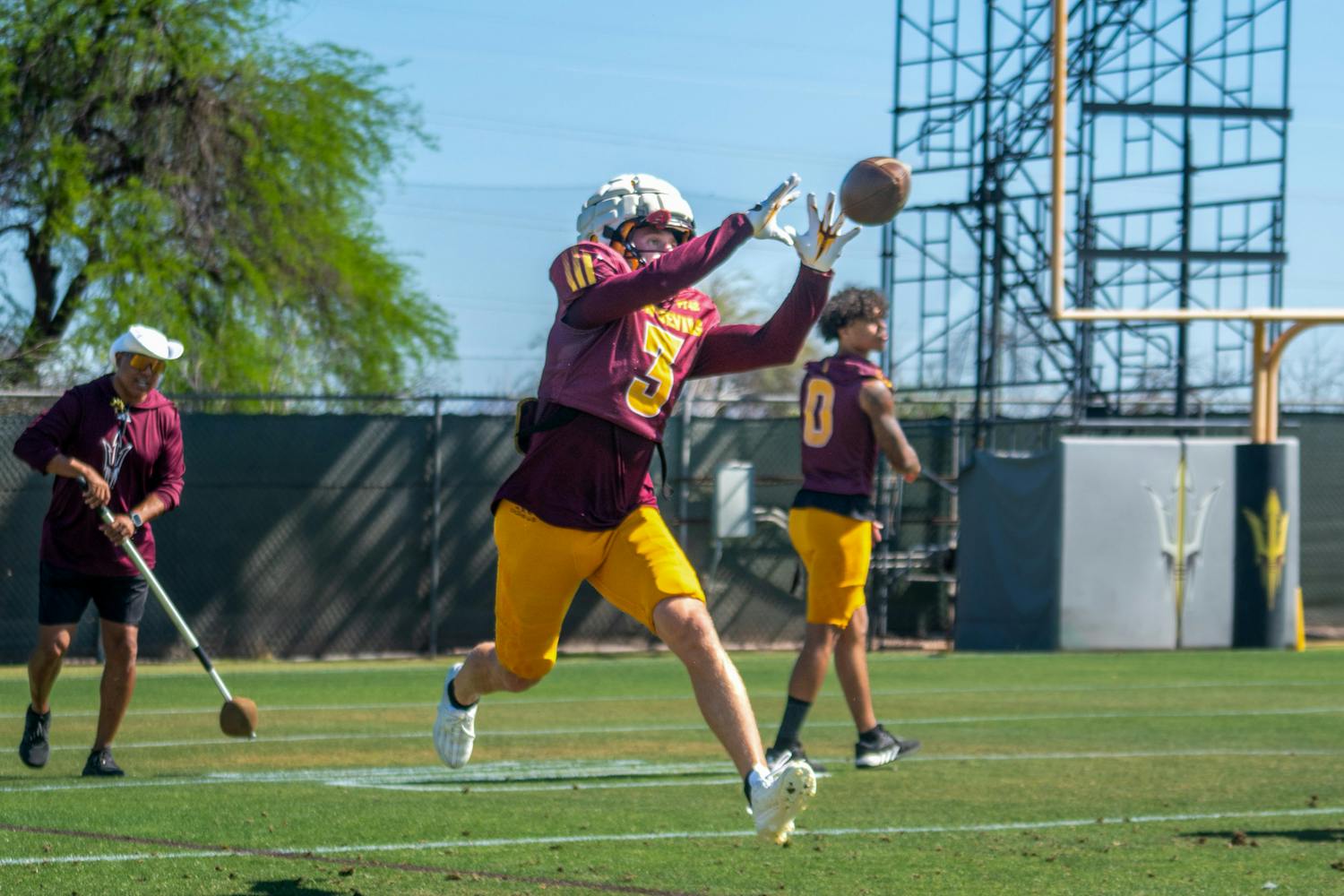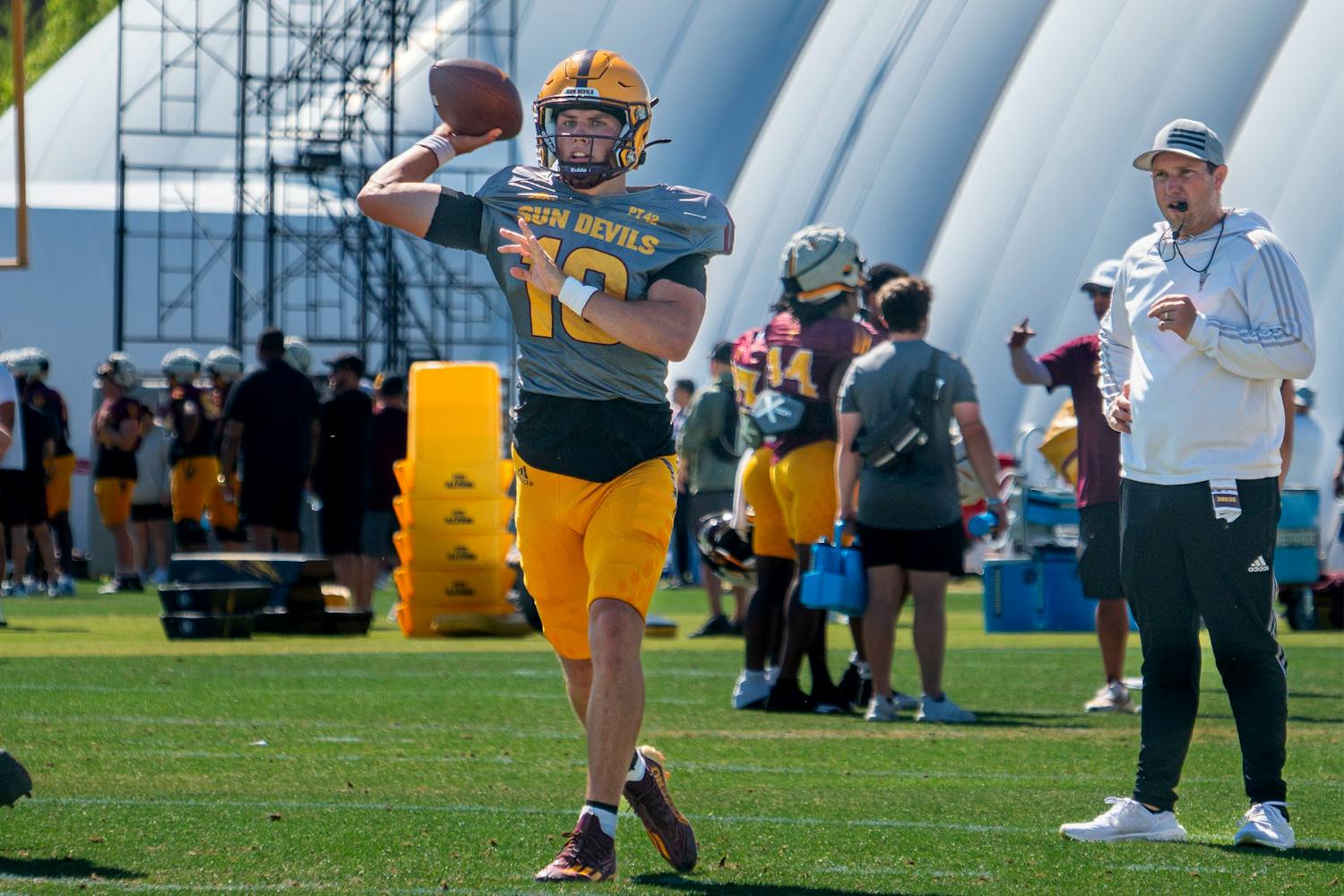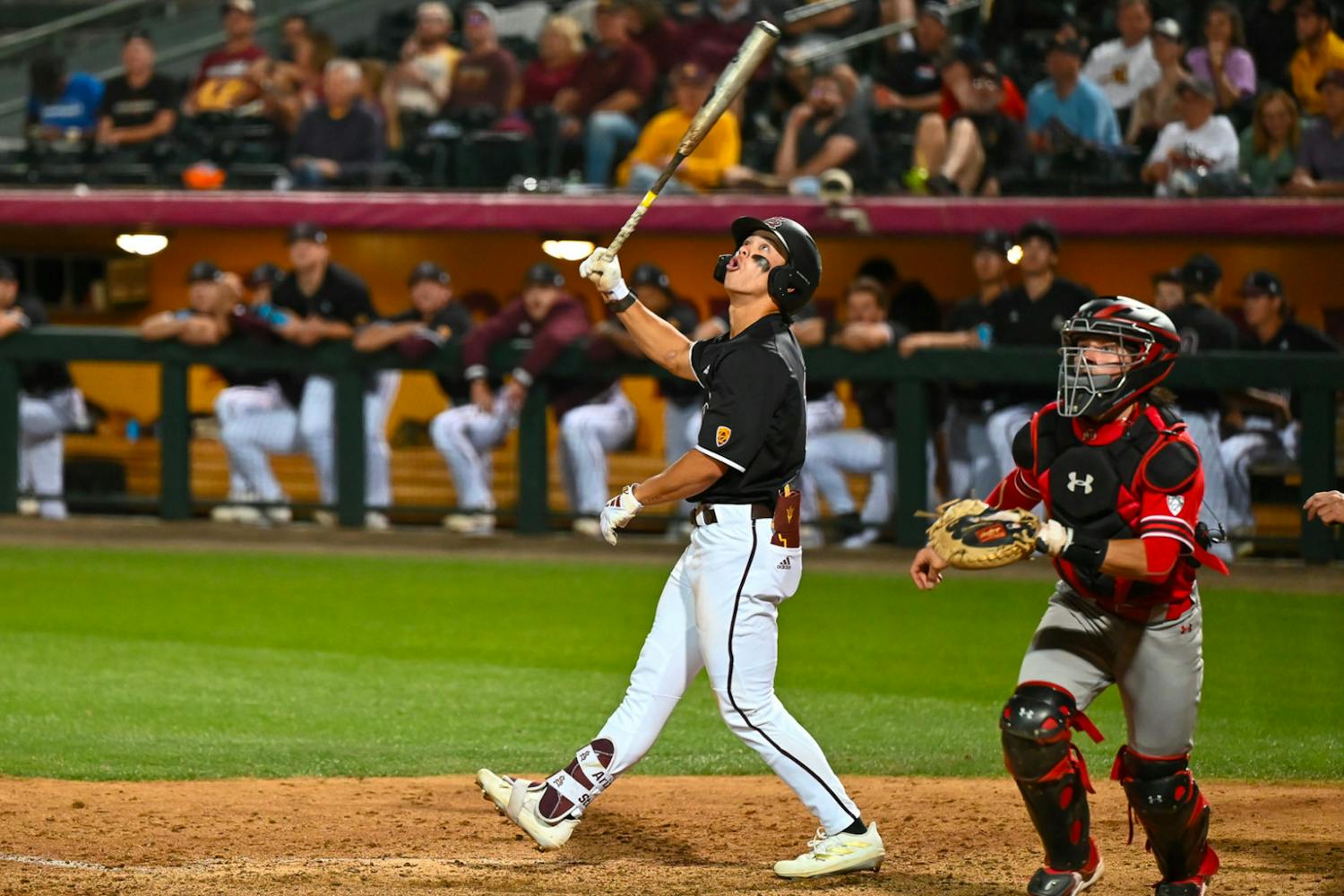Every baseball player grows up wanting to play professional baseball. The best way to make that happen is to be selected in MLB’s draft held each June.
Baseball’s draft is different than football’s and basketball’s. In football, players need to be three years removed from high school in order to be drafted. In basketball, it is one year.
In baseball, if players choose to attend college, they must be there three years before being eligible for the draft. They can however, be drafted after high school, like nine current ASU baseball players were.
Because high schoolers are also competing against college players for draft position, only the truly elite high school ballplayers go early in the draft. Unlike the NFL draft, which has seven rounds, and the NBA draft, which has two, MLB’s draft has 40, and it used to be longer. Teams used to be able to keep selecting for as long as they wanted.
As a result, baseball’s draft is by far the longest of the professional sports drafts. For example, Mike Piazza, a former MLB catcher who had a career .308 batting average with 427 home runs and could make the Hall of Fame, was selected in the 62nd round, 1,390th overall.
ASU sophomore left-hander Ryan Kellogg was chosen in the 12th round, 385th overall, by the Toronto Blue Jays in 2012.
“Pro ball wasn’t the experience I wanted at that point in my life,” Kellogg said. “Going to college when you’re 28 or whatever when you’re done (with) pro ball just isn’t the the same experience as coming when you’re 19 or 20. So I just wanted to come here and develop more and just be a better baseball player before going to pro ball and also just enjoy college life a little bit.”
The Blue Jays in particular must have weighed heavily on Kellogg’s mind. He was a Blue Jays fan growing up in Whitby, Ontario, Canada, a mere 36 miles from the Rogers Centre in Toronto, where his favorite team plays.
There’s always the chance that Kellogg’s professional career would not have panned out, and he would have found himself back in college years down the road. Even if he had, it would have been a long road to the Blue Jays. Unless he was otherworldly, he still would have most likely spent a few years in the minor leagues.
“Being stuck in the lower levels of the minors wasn’t where I saw myself,” Kellogg said. “I just wanted to be able to come here and hopefully go higher in the draft and maybe set myself up better.”
A big factor in a high schooler’s decision is the money teams offer. The Blue Jays offered Kellogg a signing bonus of $250,000 to turn pro, and he turned it down to come to ASU.
A player going to college after turning down money like that is, in a way, a bet on himself. If Kellogg were to have a great college career and get drafted again, he could make more than the quarter of a million offered to him in 2012.
“It did a little bit,” he said regarding whether money played a factor. “But it wasn’t so much the money as it was the experience. That was the biggest thing.”
Kellogg praised the coaching staff, including pitching coach Ken Knutson, and said he believed he would have gotten more coaching in college than he would have in the minor leagues.
Knutson said it is important for a player to have the same coaches from the time they arrive until the time they potentially get drafted after his junior season. He also said in the minor leagues, winning is less important, and it’s more about the individual player.
“There’s some consistency in the college environment,” Knutson said. “Our guys are going to have the same pitching coach for the three years. They’re going to be playing at the same level. Pro baseball is more of a play-and-development scenario, where here, it’s try to create a team environment to try and win games.”
In football and basketball, a player needs to declare for the draft in order to be eligible. Baseball players do not, and can use going to school as a leveraging tool, much like sophomore right-hander Ryan Burr.
Burr was selected in the 33rd round, 1026th overall, by the Texas Rangers in 2012. Scouts agreed that Burr was better than 33rd-round talent, and he received calls in the period leading up the draft, asking what his thoughts about playing professionally were.
Burr said he was receiving calls to be chosen in the third round but told teams that he was committed to playing at ASU.
“This is where I wanted to be,” Burr said. “I’ve always wanted to come here.”
The Rangers selected him in the 33rd round anyway, hoping to use the allure of a big-money contract and professional baseball to lure him away from college. They were unsuccessful and Burr came to ASU. Like Kellogg, he is eligible to be drafted again following his junior season in 2015.
While declining to say how much he was offered, Burr said it was not “life-changing money,” and that it was not enough to turn down the opportunity of coming and playing college.
ASU coach Tim Esmay said he knows that money is often the biggest determinant on where a player goes. He also said that the round where a player is selected has become less important.
MLB teams have started agreeing to terms with players in earlier rounds for less money than what they might be worth in order to save money in the later rounds. Kellogg, for example, received a $250,000 offer in the 12th round. It can be assumed that Burr, while he did not say how much he was offered, received a similar deal.
“You’re battling the money,” Esmay said. “We also have to remind them what an education is going to cost.”
Burr said he dropped in the draft because of signability, a term used in the baseball draft which describes how a likely a player is to sign with the team if he is drafted. Burr had low signability because of his desire to play at ASU, and teams knew that.
“Growing up, I loved watching ASU,” Burr said. “My parents wanted me to get an education too, and I obviously wanted to experience college, and Arizona State was the best choice.”
Sophomore left-hander Brett Lilek is in the same boat as Burr. The Seattle Mariners talked to him about signing in the third round if they chose him for a signing bonus he declined to disclose, but he turned them down. They ended up selecting him in the 37th round, 1121st overall, where they were unable to sign him. Lilek will also be draft eligible again in 2015.
Lilek said it was a combination of wanting to go to ASU and not receiving the amount of money he was seeking. He also said he did not think he was ready for pro ball.
“I would have been young and immature, and it definitely would have taken me a couple years, so ultimately, I think coming to ASU was the better choice,” Lilek said.
One thing all the players discussed was the accessibility of their coaches.
“When you go to minor league ball, you get a bunch of pitchers sent to one organization to one coach,” Lilek said. “There’s a lot more hands-on material (at college).”
Knutson said the college game lets him get used to his players — what works and what doesn’t — and that helps make them better. He gave Lilek’s development as an example; his Friday night starter this year had only one start last year because of injury.
“I know him better now, there’s more of a trust factor,” he said.
Esmay agreed. He said that players in college don’t have to worry about working with a pitching coach in Single-A ball that has different beliefs than the coach in Double-A. In college, the program’s philosophies will remain the same.
“Opinions are opinions,” Esmay said. "Everybody has an opinion. This isn’t rocket science, so the opinions are what you’re getting and if you stay true to one opinion, it allows them to stay with the process."
Knutson said that signing a professional contract after high school does not accelerate the path to the big leagues. High schoolers typically need to play in the lower levels of the minor leagues that college players, who are more advanced, can typically skip.
Esmay said while that wouldn’t typically apply to high schoolers drafted in the first round, the mid-round players, such as Kellogg, who was drafted in the 12th round, can choose to spend their years developing in the lower levels of the minor leagues or in college.
In all, nine of the current Sun Devils were drafted out of high school: Kellogg, Burr, Lilek, Hever Bueno (New York Yankees, 17th round), David Graybill (Los Angeles Dodgers, 31st), Johnny Sewald (Baltimore Orioles, 34th), Cullen O’Dwyer (Atlanta Braves, 39th), Drew Stankiewicz (Colorado Rockies, 40th) and Nate Causey (Colorado Rockies, 46th).
Three of them said they have no regrets.
“It’s worked out so far,” Burr said.
“I’m very happy with the decision I made, and hopefully one day I do reach pro ball,” Lilek said.
“I’ve loved every minute I’ve been here at ASU,” Kellogg said. “Looking back, sometimes you sort of wonder what if, but I wouldn’t change my choice for the whole world.”
Reach the reporter at justin.emerson@asu.edu or follow him on Twitter @J15Emerson



